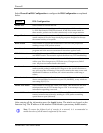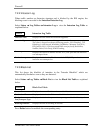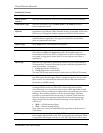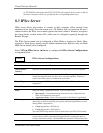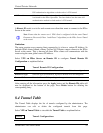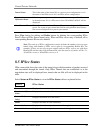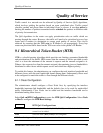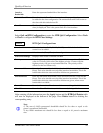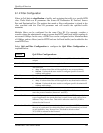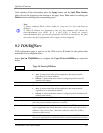
Virtual Private Network
Dlink DRO-210i User Guide 55
ESP authentication algorithm on both ends of a VPN tunnel.
AH Transform
Select the AH authentication algorithm (MD5, SHA) to be used when AH
is selected for the IPSec Operation. The user needs to use the same AH
authentication method on both ends of a VPN tunnel.
A Remote ID needs to exist for each remote user client that wants to connect to the IPSec
Server at the router.
Note: Ensure that the remote user’s VPN client is configured with the same Tunnel
Parameters (Password, Phase 1 and Phase 2 algorithms) as the IPSec Server Tunnel
at the router.
Limitation:
The router requires every remote client connected to it, to have a unique IP Address. So
multiple IPSec clients behind a Many-To-One NAT Router cannot connect to the IPSec
Server at the router. This is because all these IPSec clients will communicate with the
router using the same global source IP Address.
Select VPN →
→→
→ IPSec Server →
→→
→ Remote ID to configure Tunnel Remote ID
Configuration as explained below.
Tunnel Remote ID Configuration
IPSec Server Name
Select the IPSec Server Tunnel for which Remote ID is to be configured.
Remote ID Type
Select the type (IPV4 address, FQDN) of Remote ID to be configured.
Remote ID Data
Enter the Remote ID depending on the type selected.
After entering all the information press the Apply button and the Remote IDs table will
now be displayed at the bottom of the page. Press Delete button for deleting the
corresponding entry.
8.4 Tunnel Table
The Tunnel Table displays the list of tunnels configured by the administrator. The
administrator can edit or delete the configured tunnels from this page.
Select VPN →
→→
→ Tunnel Table to view/edit the Tunnel Table as explained below.
Tunnel Configurations
Web UI
Web UI



